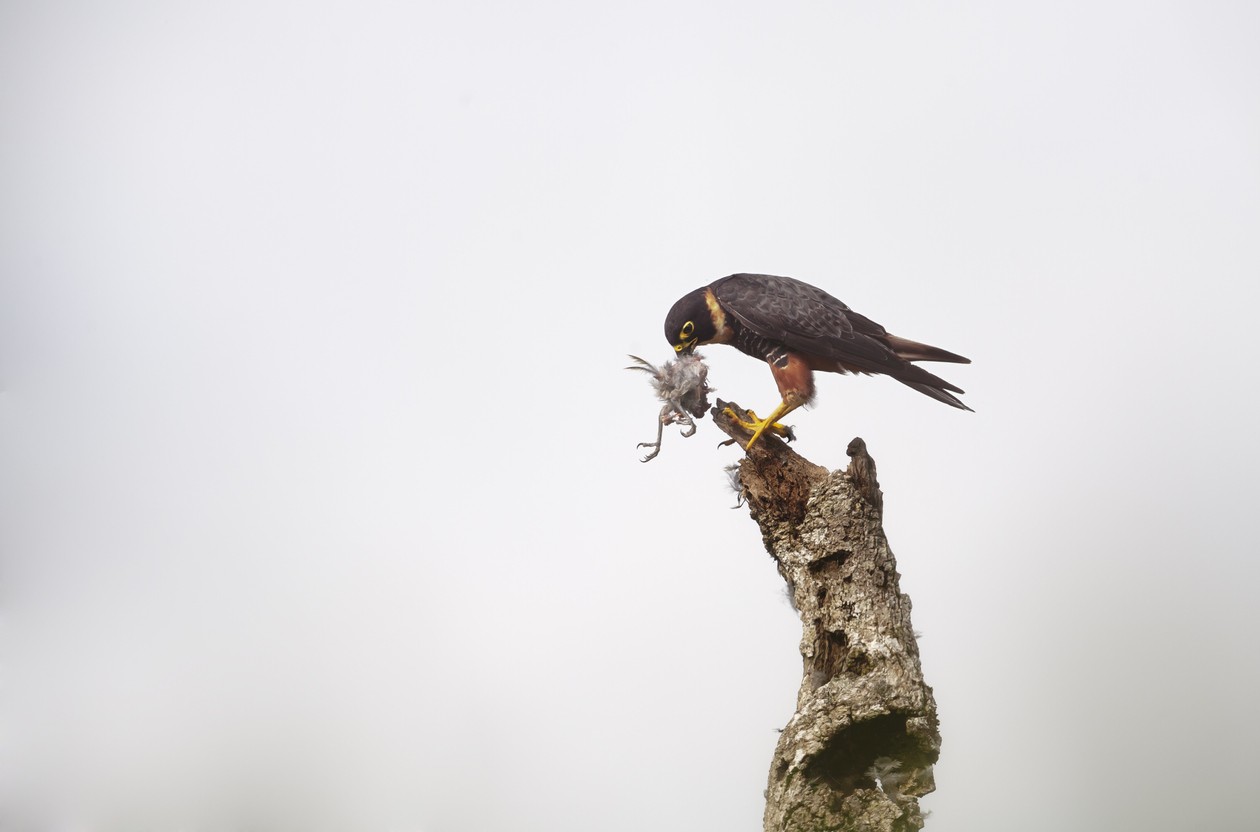Barred Forest-falcon
A species of Forest Falcons Scientific name : Micrastur ruficollis Genus : Forest Falcons
Barred Forest-falcon, A species of Forest Falcons
Botanical name: Micrastur ruficollis
Genus: Forest Falcons
Content
Description General Info

Description
Adults of most subspecies are typically dark slate grey above; the tail is tipped with white and has three to six narrow white bars. The throat is pale grey, shading to the darker slate of the crown. The rest of the under parts, including the under-wing coverts, are white, finely and clearly barred with black or dark grey. The upper breast is a darker grey. The primary remiges are dark brownish-grey with off-white bars on the inner webs. One subspecies, M. r. zonothorax from the East Andean foothills, is polymorphic (at least in the northern part of its range), and also occurs in a brown morph, where most of the upperparts, head, and chest are brown or rufous instead of grey. The nominate subspecies, which is found from southeastern Brazil south to northeastern Argentina and west to Paraguay, appears to only occur in the rufous-brown morphotype, as also suggested by its scientific name, M. r. ruficollis. The eyes are cream to light orange brown; the bill black, becoming yellow at base of the lower mandible; the cere, lores, and orbit are yellow, and the legs are orange-yellow. 
Size
38 cm
Nest Placement
Cavity
Feeding Habits
Barred Forest-falcon, a skilled predator, consumes lizards, small birds, and mammals including bats and rodents, along with snakes, frogs, toads, and occasionally crabs and fruit. Its feeding behaviors involve stealthy hunting and ambush tactics, specializing in quick strikes from perches in dense forests.
Habitat
Barred Forest-falcon thrives in tropical forests, particularly humid and mature woodlands, but is also found in secondary growth areas such as forest edges and swamp forests. Preferring open understories, barred Forest-falcon adapts to diverse environments including semi-deciduous forests and well-wooded savannas. Its habitat spans from sea level up to elevations of 2500 meters, sometimes reaching 3000 meters.
Dite type
Carnivorous
General Info
Feeding Habits
Bird food type


Scientific Classification
Phylum
Chordates Class
Birds Order
Diurnal Birds of Prey Family
Falcons and caracaras Genus
Forest Falcons Species
Barred Forest-falcon